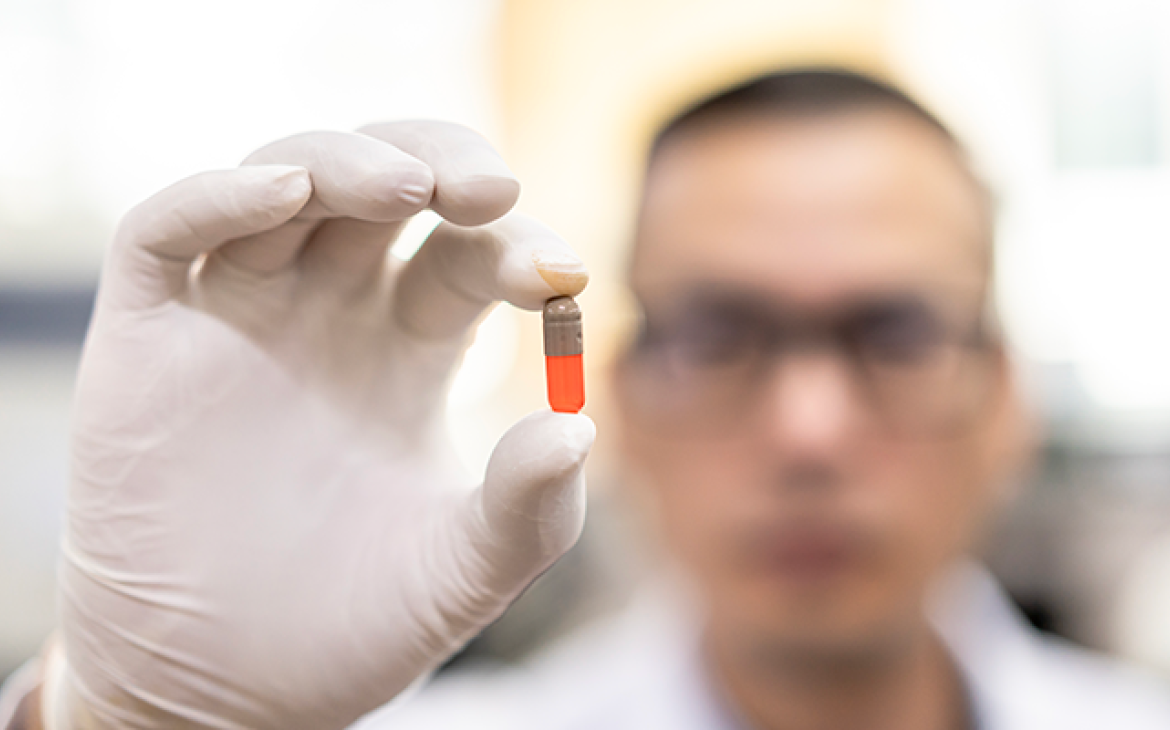
Revised on: January 17, 2023
Editor’s note: Following the recall mentioned in the piece below, in December 2022 the FDA announced a voluntary recall of lots of Quinapril Tablets due to the presence of a nitrosamine impurity observed in testing above FDA’s proposed interim limit, adding to the growing number of recalls due to nitrosamine impurities in recent years.
The October announcement of a recall of two lots of the hypertension medication Quinapril and Hydrochlorothiazide from the U.S. market is putting nitrosamine drug substance related impurities (NDSRI) in the spotlight once again.
The voluntary recall of the blood pressure medication – the latest of several similar recalls in the last year – demonstrates the growing need to mitigate the risks arising from nitrosamines, which – at certain levels – are linked with an elevated risk of cancer.
Nitrosamines have represented a significant challenge for industry and regulators for some time. Earlier this year, at a U.S. Food and Drug Administration (U.S. FDA) workshop, my fellow panelist and I addressed the latest developments in the identification and control of nitrosamines in pharmaceutical products. Audience questions revealed a wide range of concerns about sources of contamination, testing and support for industry’s efforts to control levels – demonstrating the seriousness of the issue and the need for answers.
Amidst the latest recall related to NDSRIs, USP continues to lead the charge by providing quality standards-based solutions, organizing workshops and training courses and hosting a forum for the exchange of crucial knowledge to help keep our medicine supply chain strong and protect patient health.
Nitrosamines’ emergence in drug products
Nitrosamines are organic chemical compounds that may be present in low levels in a wide variety of products such as processed meats, cosmetics and cigarette smoke. When they are metabolized, they are converted to alkylating agents that can damage DNA and have been linked to cancer.
Starting in 2018, concerning levels of these impurities were found in commonly prescribed medicines for blood pressure, diabetes, and other conditions. As was the case again this fall, discovery of these impurities has resulted in recalls that may leave patients without treatments they depend on. To assess and control the presence of nitrosamine impurities in medicines, the U.S. FDA and other global regulatory agencies have issued public health alerts and guidance documents for manufacturers.
Searching for the source
One of the challenges posed by nitrosamine impurities is that they can originate in a pharmaceutical product at many points throughout the manufacturing process and beyond. Contaminants can come from a drug substance, excipients (a drug’s inactive ingredients), solvents or water used in the process, product degradation during storage, or even in a product’s packaging.
Indeed, USP researchers recently published new findings in the Journal Of Pharmaceutical Sciences on solutions for determining multiple nitrosamines at low levels in commercial solvents to help eliminate or reduce the presence of nitrosamines in drug products in order to improve quality.
With so many potential sources, it is critical that manufacturers evaluate their products for risks. Ensuring the control of a product’s impurities levels cannot simply be a last step in the manufacturing process; manufacturers must pursue quality in the lifecycle of a drug from beginning to end.
Efforts to control risks
In addition to concerns about patient safety, the presence of impurities in pharmaceutical products poses financial risks to manufacturers, who are responsible for ensuring that their products do not contain unsafe levels of nitrosamines and other impurities. This is complicated by varying recommendations for levels of impurities by different regulating bodies. Therefore, it is crucial for manufacturers to study and understand respective regulatory requirements for the products that are being marketed to those countries and ensure compliance.
The good news is that there are a growing number of solutions to test for and identify nitrosamine impurities, and USP is at the forefront of helping regulators and industry tackle and control the threat.
A growing number of solutions
A recently published general chapter in USP-NF, General Chapter <1469> Nitrosamine Impurities, identifies possible sources in drug products, their components and their manufacturing process, along with the risks associated with each source. The chapter provides recommendations on risk assessment and the development of detection and control strategies.
General Chapter <1469> provides manufacturers with a range of different test methods for the detection and quantitation of nitrosamines in their products, to help ensure they remain below harmful levels. The chapter includes methods for determination of nitrosamines using eight USP Nitrosamine Reference Standards, which may also be used with methods provided by U.S. FDA and other regulators, as well as for validating methods developed in-house.
USP also offers a growing portfolio of more than 200 Pharmaceutical Analytical Impurities to help manufacturers identify, measure and refine strategies to control impurities across their R&D and manufacturing processes. USP is also developing four new nitrosamine reference materials that are not part of our official General Chapter <1469> and may continue to expand the list as recalls due to NDSRIs impact the quality of medicine.
Beyond standards: Collaboration and knowledge-sharing resources
Aside from providing reference and documentary standards, USP also offers numerous educational resources, trainings, workshops, webinars and toolkits. USP is proactively finding ways to collaborate with regulators and other pharmacopoeias to gain insights into the growing industry concerns regarding nitrosamines and to work jointly to propose potential solutions. USP has also conducted survey research to seek feedback from industry to ensure that the solutions proposed by USP meet stakeholders’ needs.
At the workshop earlier this year, a topic that received a great deal of interest was the Nitrosamines Exchange, USP’s online community platform that offers members the chance to share real-time updates, learnings, challenges and solutions with one another. It recently passed an exciting milestone – 1,800 active members – and is continuing to grow. Members leverage the exchange to gain insights from one another by posting questions about regulation, testing or specific tools and providing comments about their experiences or on draft publications. At the Nitrosamines Exchange, USP is planning to publish a series of analytical procedures developed and validated at USP labs that can be used by industry as a starting point to analyze their products.
Recently, an idea that began as a discussion item in the Nitrosamines Exchange community resulted in the collaboration on and publication of new in silico research on the risks of nitrosamine formation by scientists from USP, LHASA Limited, AstraZeneca, Sai Life Sciences and Merck, “The Landscape of Potential Small and Drug Substance Related Nitrosamines in Pharmaceuticals.”
At the Nitrosamines Exchange, USP is planning to publish a series of analytical procedures developed and validated at USP labs that can be used by industry as a starting point to analyze their products.
As we have learned, the threats to our global medicine supply chain posed by nitrosamines and other impurities are too great for any of us to take on alone. It will truly require a collaborative approach to solve this problem, and USP is proud to play a leading role by providing training resources, convening a crucial information-sharing forum, and offering standards-based solutions.


